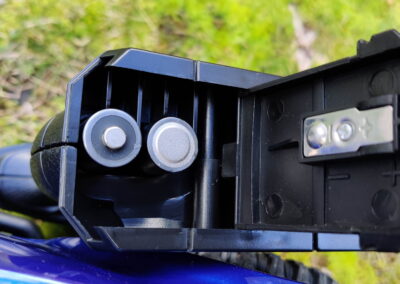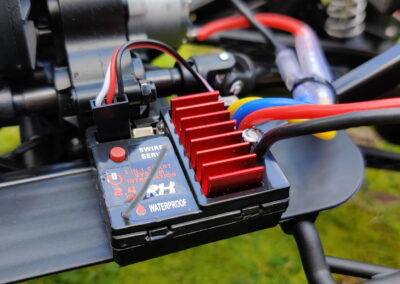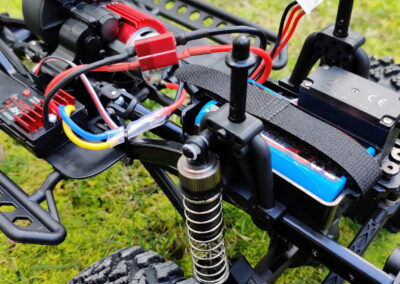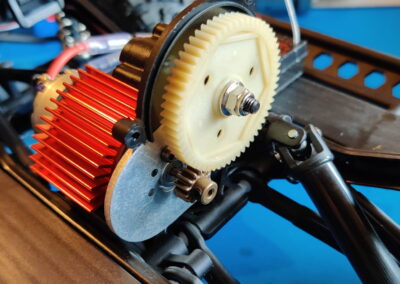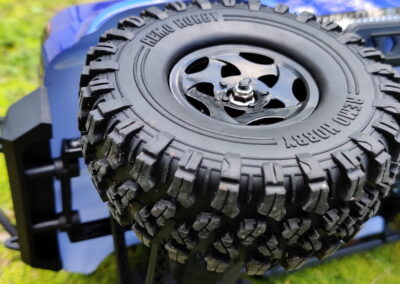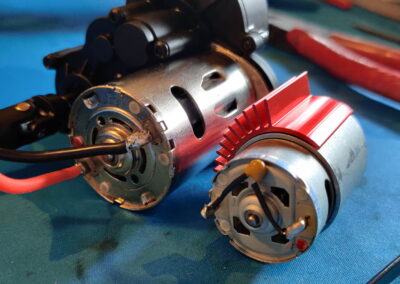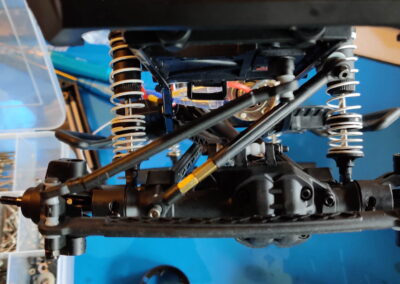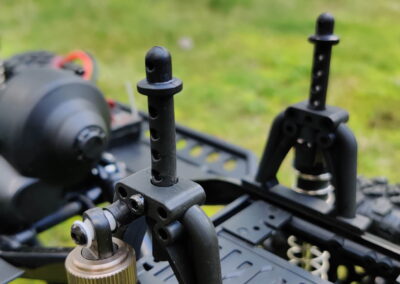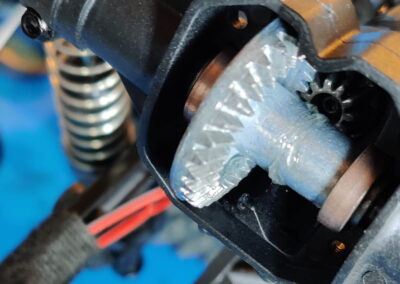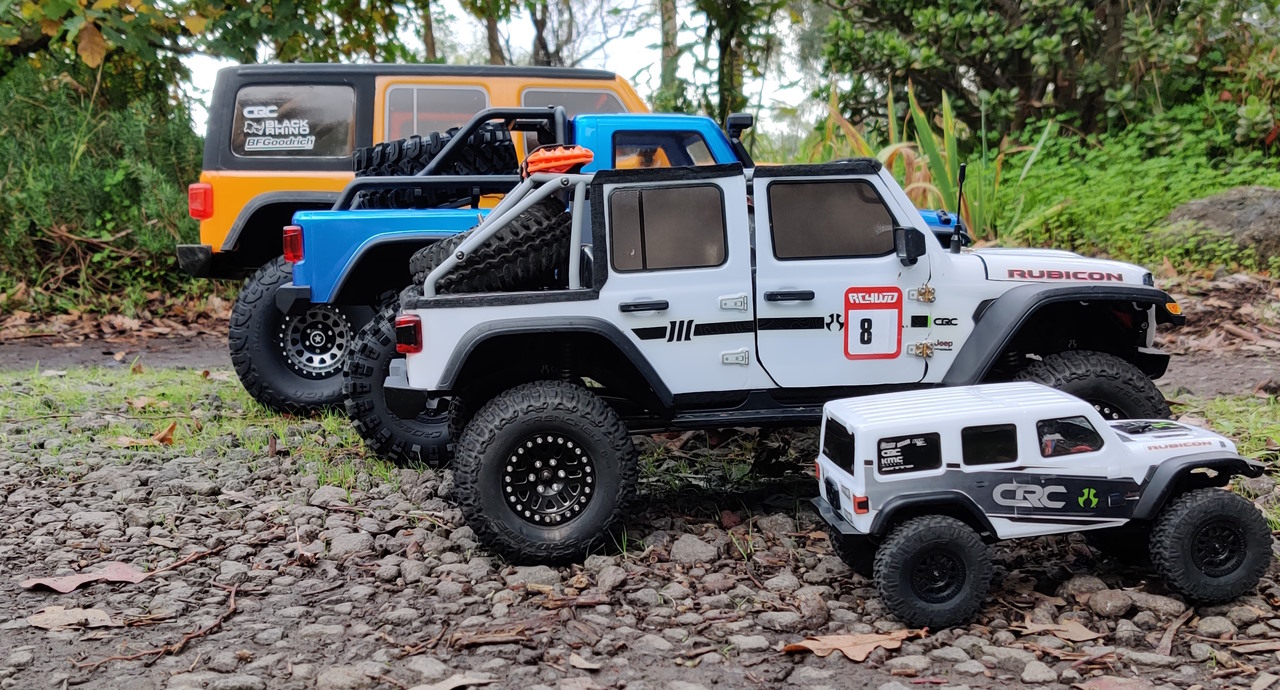The Old Adage
The Remo Hobby 10275 is interesting for its features and price. There’s a real promise of value in this most budget of 1/10 scale RC crawlers – IF it performs! There’s an old adage in the motoring world that goes, “fast, cheap and reliable: pick two”. Apply it to RC crawlers and it may be something like, “capable, cheap and reliable: pick two”. The Remo Hobby 10275 may be attempting to cover all three of these measures – and honestly, on paper, it looks like there may be something to it.

Trust, But Verify
As always, we test our 1/10 scale rock crawlers on our 6-problem course. This gives a decent, broad-level indication of performance relative to others. We’ll get to performance in a bit. First, let’s take a closer look at what you get when you buy a new Remo Hobby 10275.

What’s In the Box?
Aside from the car itself, there’s a radio transmitter, manual USB charger, 1500mAh Li-ion 7.4v battery and a handful of basic tools and spare body clips. The manual is pretty good, for a cheapie. It includes basic operations, troubleshooting steps, exploded parts diagrams and a list of spares and upgrades available for the vehicle. The package is well assembled, protects the vehicle nicely and is attractive. This is about as nice as one ever might expect of cheap RC vehicles – five stars on inclusions and packaging here.
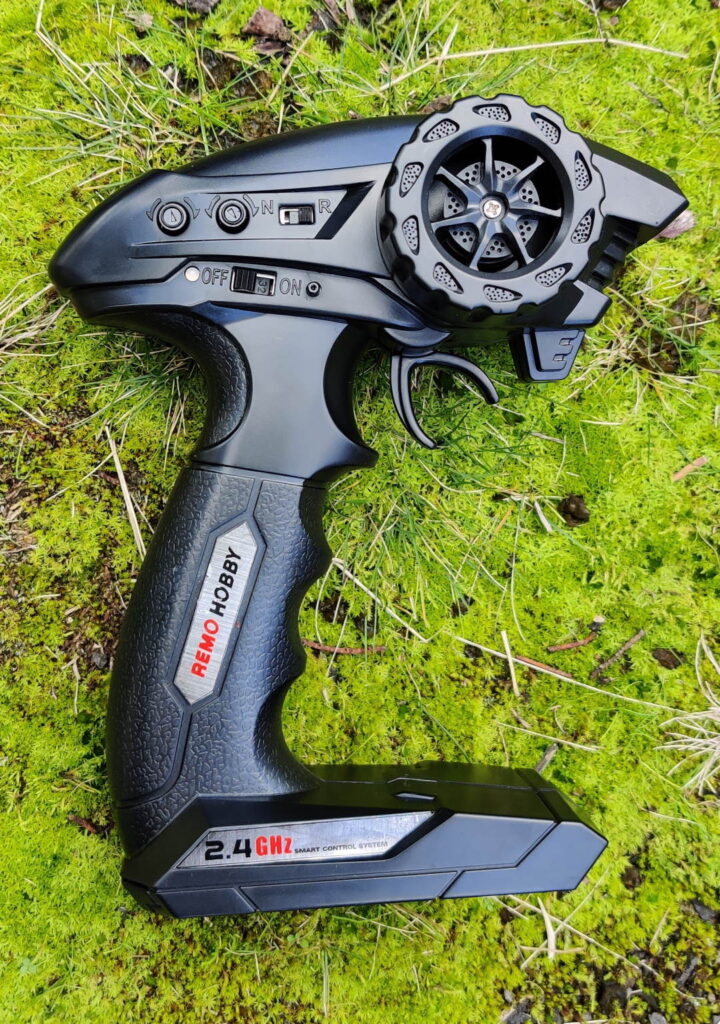
Power Play
The radio transmitter requires just two AA batteries. You’ll need to supply these yourself, but that’s the only thing you’ll need to bring to this party. Remo has you covered for the rest. The Li-ion USB charger is slow but it’ll get the job done in a few hours. The Li-ion battery is made of two 18650 cells and is appropriate for this type of vehicle. As far as power and charging is concerned, this is a well-rounded package.
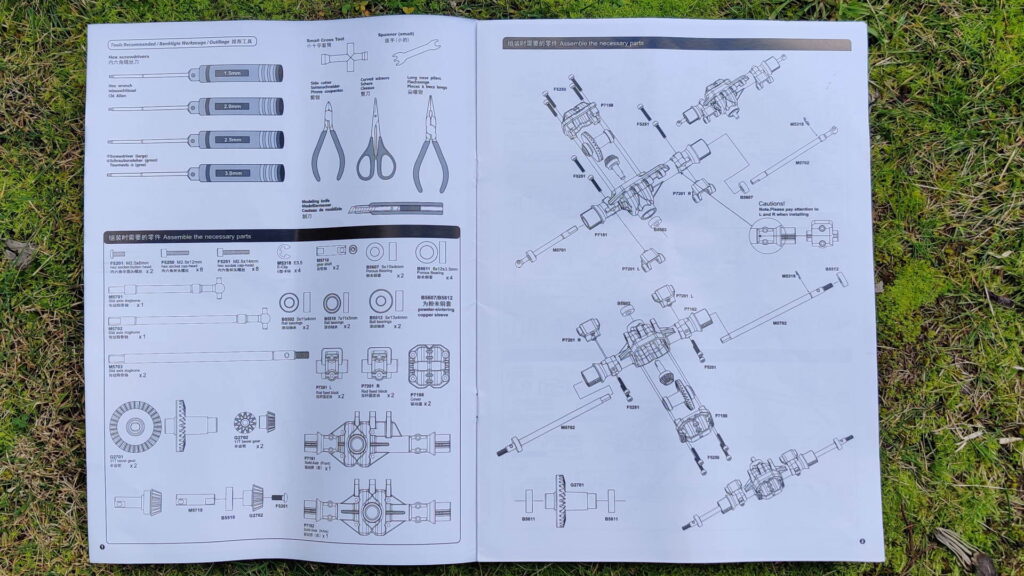
Assembly Required?
The wheels are not attached to the vehicle in the box. There are spacers on the axles to ensure the metal wheel hexes and drive pins remain in place, so you’ll have to remove them. Also note the tires are directional, so pay attention to that when putting the wheels on. The wheels are plastic, three-part bead-lock design with 5 self-tapping screws each. It’s easy to get the tires mixed up – evident in the photo below! – but otherwise, that’s it for assembly. Easy!
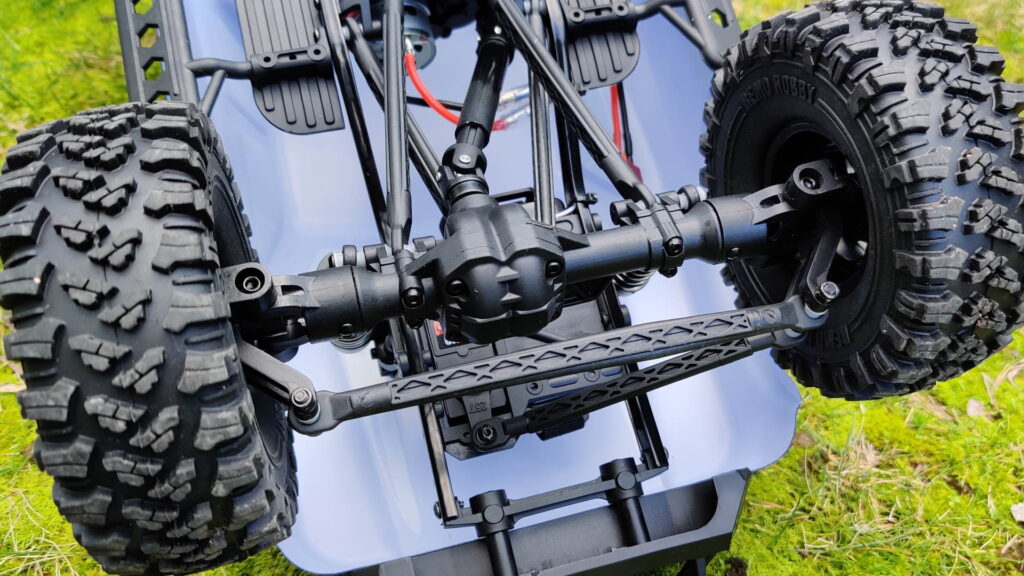
About the Vehicle
The Remo Hobby 10275 has steel chassis rails and fibre-infused plastic spacers throughout. There is a standard 4-link design with plastic links with nylon ball ends on each end of the vehicle. The servo is chassis-mounted, with no panhard, so steering is imprecise and worsened when suspension is articulated. With a 4-link setup, you’d want the servo mounted on the axle itself rather than on the chassis in order to preserve steering accuracy and full throw. We modified ours after initial testing – more on that below.
The driveshafts are plastic, telescoping universals with E-clips holding the unis together. They’ll be strong enough on this vehicle to never need replacing, we think. There are unshielded ball-bearings are the pinion end of the diffs and brass shims on the rest of the vehicle. Though this is seen often as a negative, for this cheap, lightweight rig, shims could well be a good thing. They don’t seize up as readily after exposure to mud and water – something to consider!
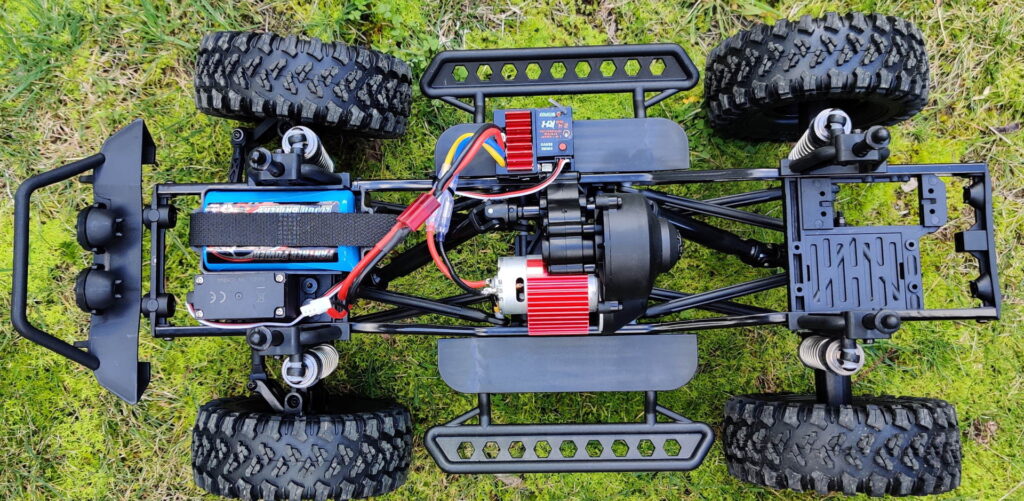
Remo Hobby 10275 Suspension
Suspension on all corners is plastic bodied, oil-filled shocks with metal caps and coil-over springs. The springs are too firm for the low weight of the rig, but the shocks do not leak and some articulation is still possible. We modified ours after the initial rock test – again, we’ll cover mods in a bit.

Body & Lights
The body is a single-piece, polycarbonate shell with through-holes for body posts and basic stickers applied on top. Our unit’s stickers were not applied with much care and things are poorly aligned in several spots. This is forgivable, given the low price of the model, we think. There are light buckets at each end for 2x 5mm white LEDs up front and 2x red LEDs in rear.
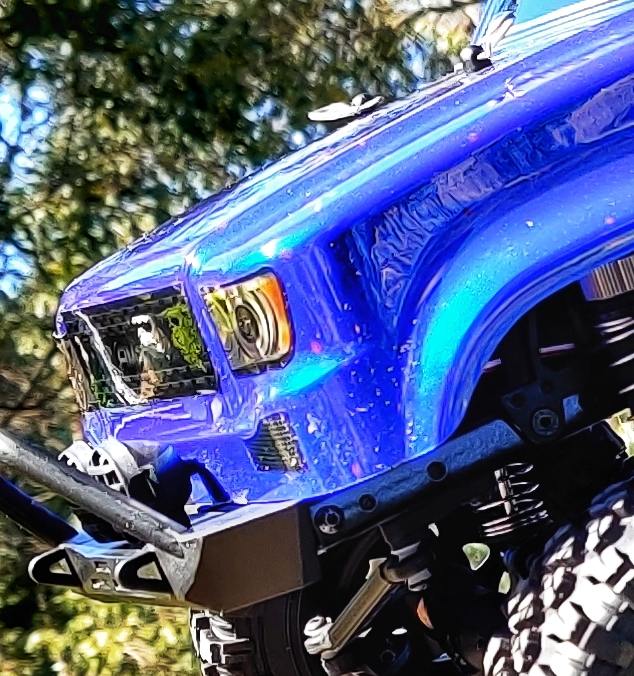
Remo Hobby 10275 Electronics
The company claims the Remo Hobby 10275 sports a 40A ESC (Electronic Speed Control). Under moderate throttle, our unit kept cutting out with the included 390 motor and stock gearing. We suspect the ESC is more likely to have a limit of somewhere around 20A, but this is unconfirmed. There is a way to address this – we’ll cover this in the Mods section, below.
The radio system is integrated with the ESC, along with a 5V 2A BEC (Battery Eliminator Circuit) that powers the steering servo. This 3-in-1 device has a single Futaba-style plug for the 3-wire servo and another micro-JST plug that outputs 3V to power LEDs. We installed a set of LEDs in ours and they powered perfectly from this second port, which is otherwise unused in the default configuration.
The radio transmitter is small in the hand but will suit kids very well. There’s a 50% throttle limiter button on the radio, as well as steering trim and steering dual-rate dials. It’s a basic unit but fine for this vehicle.
Steering
The Remo Hobby 10275 gets an entire section for steering, and that is unfortunately not for good reasons! The trim and dual-rate dial system on the radio creates an unnecessarily low limit to steering end-points. There is more throw available in the throttle than what the radio allows, in other words.
We tested this by maxing out the dual-rate dial first, then steering fully left and/or right, then holding the wheel and adjusting the trim further in that same direction. For both left and right we found there was more throw available in the servo. There’s no way to fix this without replacing the ESC with a discreet ESC and radio receiver, which would also mean a new radio transmitter too. Not ideal given this is possibly one of the world’s cheapest 1/10 RC crawlers – there will not be a budget for all that in most cases, we’d think. This is especially unfortunate given the CMS (Chassis Mounted Servo) and 4-link front setup already limit steering and so the car needs every bit of throw it can get from the servo!
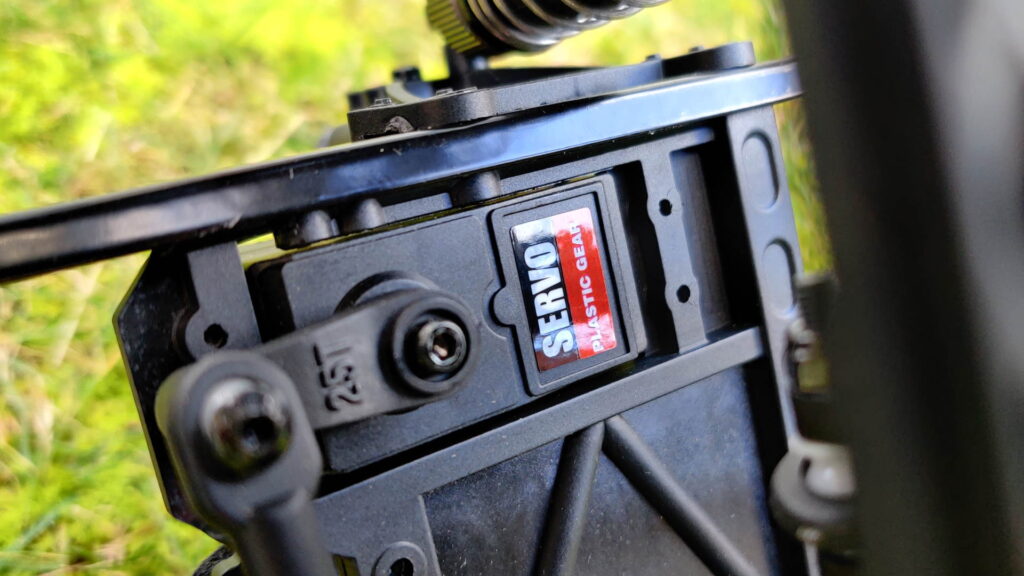
Fit For Purpose?
This is a very cheap RC car. It’s certainly not a bad vehicle – just search the web for “cheapest RC car” or “best cheap RC car” and you’ll find many blog and store sites loudly proclaiming how good this or that cheap model is. In our experience, most of these “best cheap” models really aren’t so good.
The Remo Hobby 10275 gets really close to being a good choice for bargain-basement 1/10 RC crawling. The electronics and components are not terrible! There are imperfections and limitations by design and everything is made to a price. Much is forgivable at this price-point.
However – and this is the kicker – the Remo Hobby 10275 is not a rock crawler in its stock form. The ESC cutting out is an issue, as is the poor steering and low traction. There’s a poor drag brake and a throttle delay when changing directions. See all of this in our video series below:
Our Test Course
If you’re not familiar with how we test RC rock crawlers, we have a course that challenges any 4x4 RC crawler in many ways:
- Approach and departure angle: these are challenged on Problems 2 and 3;
- Side-hill ability: tested on Problems 1, 3 and 5;
- Breakover (skid clearance): tested on Problems 4 and 6;
- Suspension articulation and centre of gravity: challenged on problems 2 and 5; and lastly,
- A punishing ascent on problem 6 tests all of balance, break-over, articulation, tire traction and approach and departure angles.
Put together, we have a gnarly, challenging set of problems that challenge all crawlers. If a rig can conquer 3 or more of them, chances are you have a reasonably high-performance rock crawler. There are some machines that can claim all success on all six in stock form – but not many!
What Is It Good For?
All is not lost with this model! For all the challenges we found with rock crawling, keep in mind that we tested this vehicle on the same course that challenges vehicles costing fully ten times this amount! The car is durable in its stock form and materials used are fully appropriate for its intended purpose.
Yes, it’s a poor rock crawler. But it will make a fabulous backyard basher. It’ll handle puddles and creeks and it’ll deliver fun while doing so! The light weight and bouncy suspension combined with the tall-ish gearing and fast 390 brushed motor mean this thing is a hoot on bumpy ground.
Remo Hobby 10275 Mods
Keeping in mind this is a very cheap new RC crawler, any changes we’d make to this model need to be low-cost. We can’t just rip out all the electronics and replace them with high performance gear and do the same with wheels and tires. That would defeat the purpose entirely!
No, for the Remo Hobby 10275 we want only to change or upgrade things whilst keeping the price as close to $0 as possible. We wanted to lower its center of gravity, slow it down, improve its steering and address that ESC cut-out issue. We managed to achieve all of this for about $15!
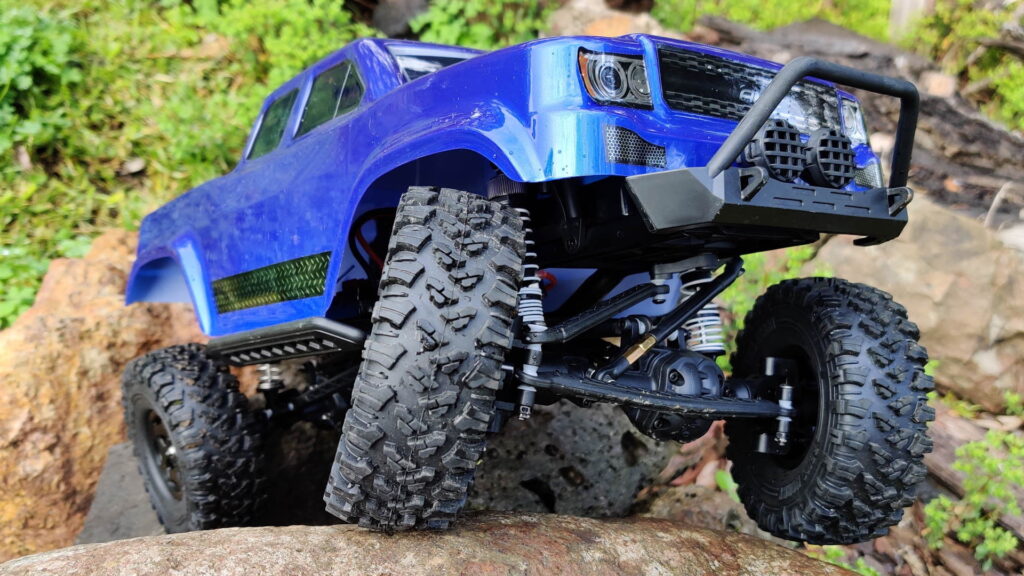
Our Verdict
For the price, we think the Remo Hobby 10275 will deliver on both longevity and fun, particularly in the hands of kids. For this purpose, we recommend it. However, if you’re after a rock crawler first and foremost, look elsewhere.
Where To Get It
We have a 10% discount coupon available care of Banggood, who also graciously supplied us with the Remo Hobby 10275 for review and testing.


Craig Veness
RC-TNT
Craig has been into radio control since the 90s and into RC crawling since about 2010, when a Losi MRC started the obsession! Now it’s all rocks this and crawl that and upgrade all the things! …You know how it is, right? Welcome home 🙂


